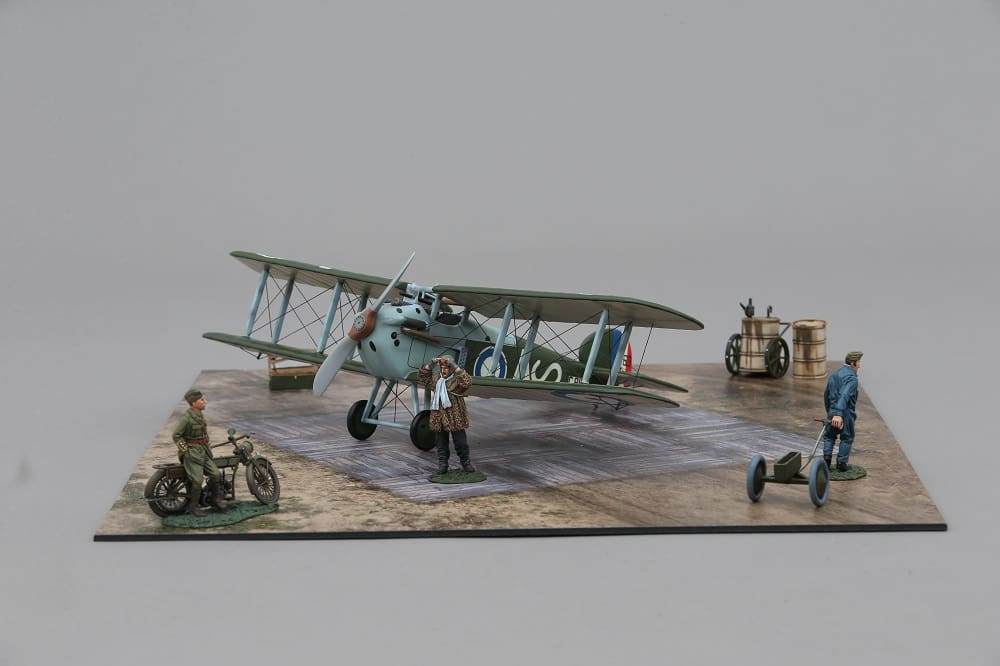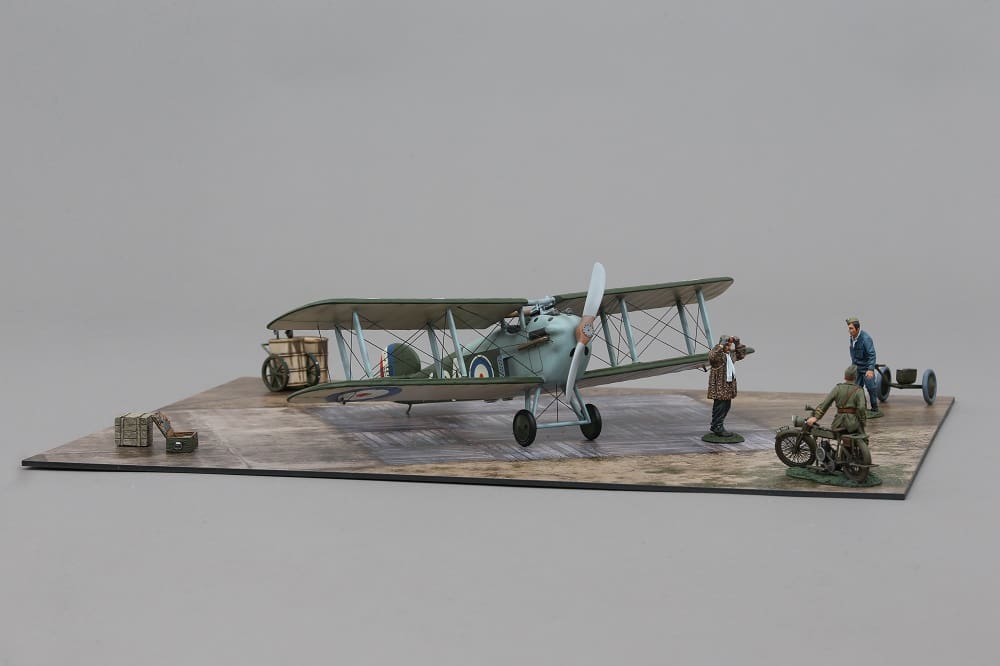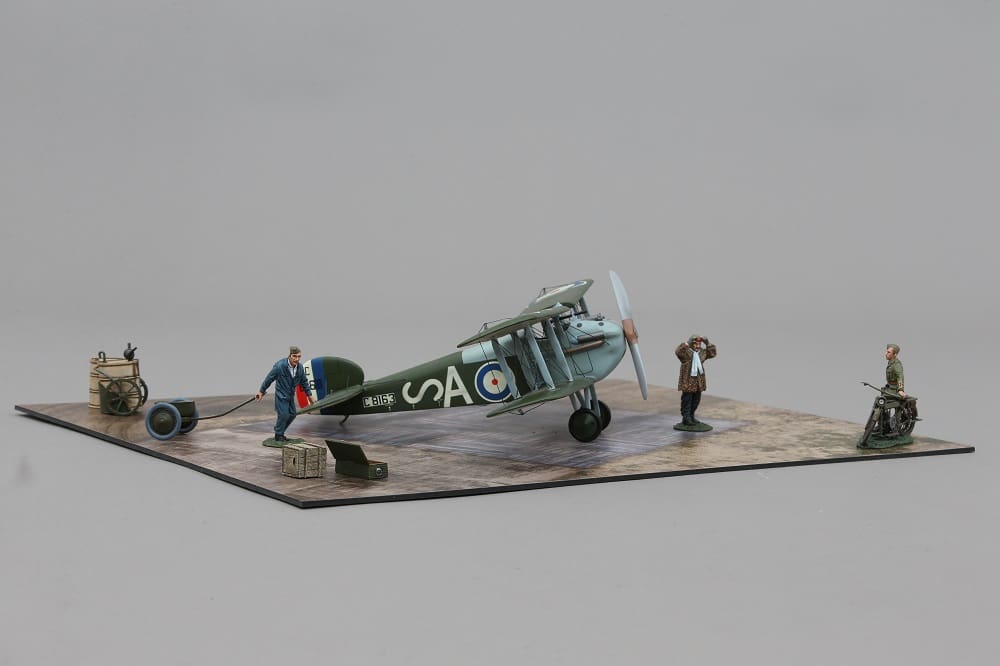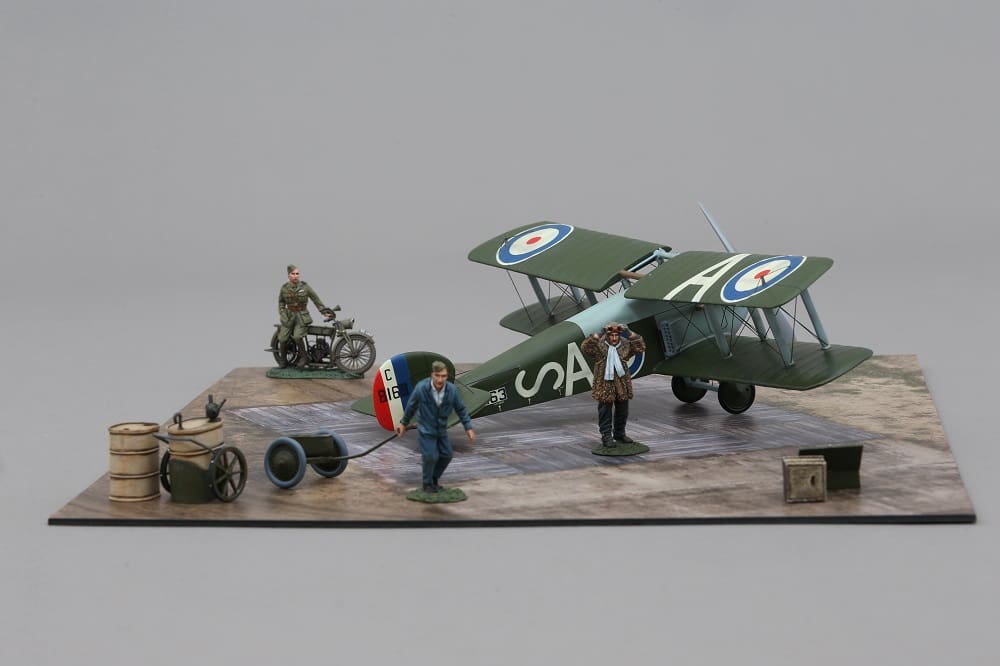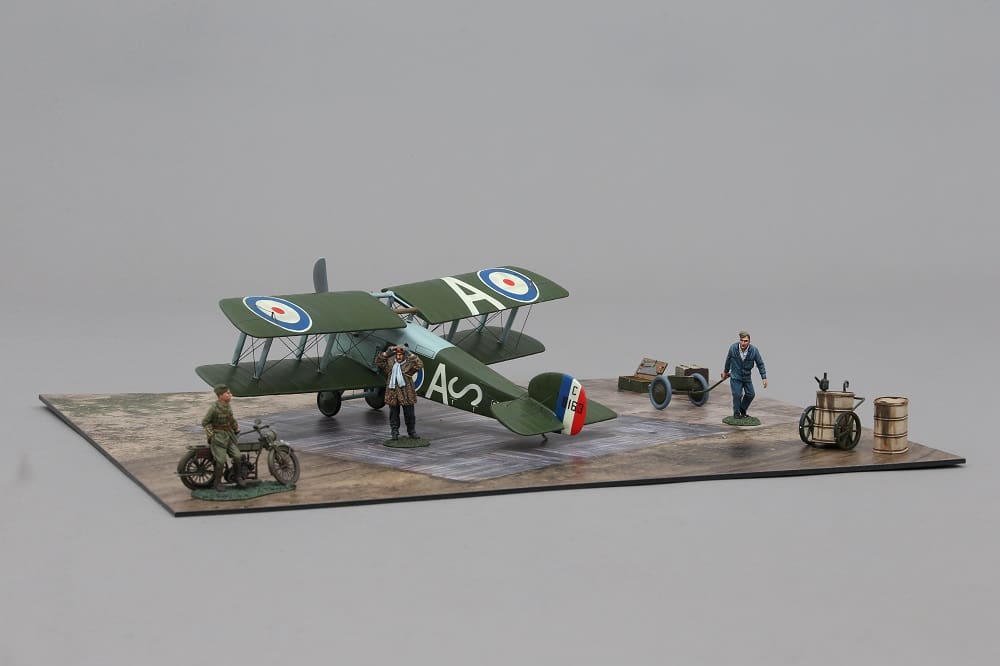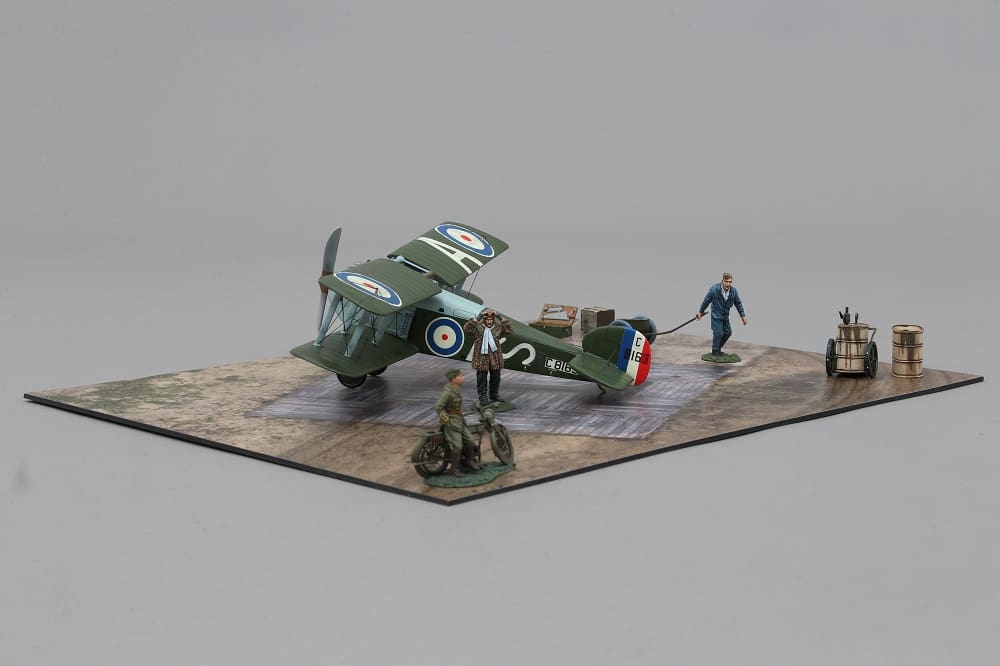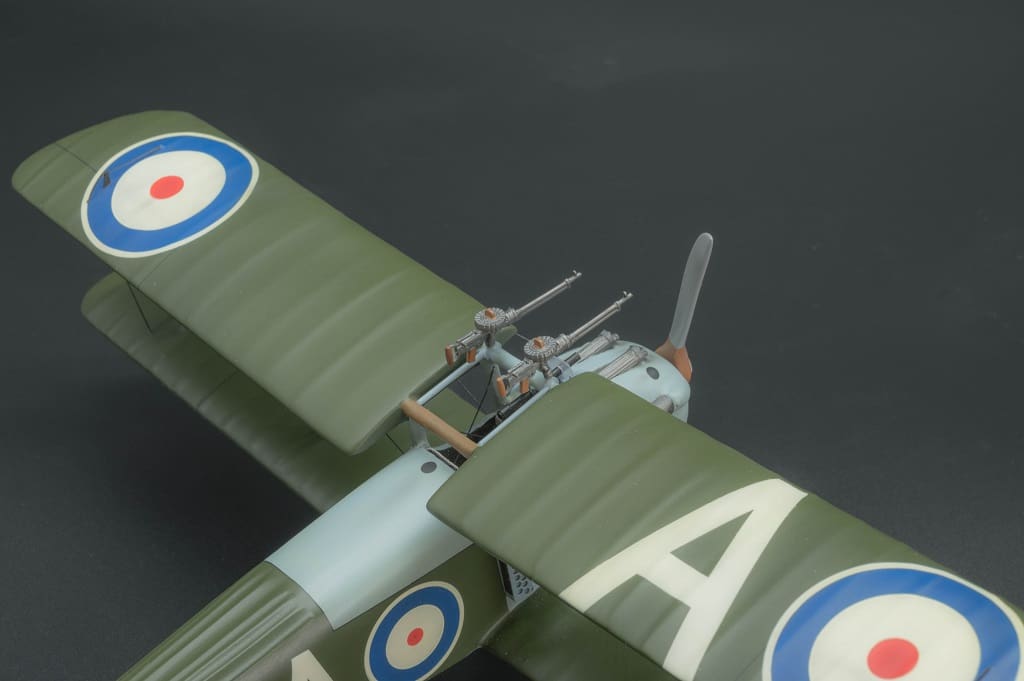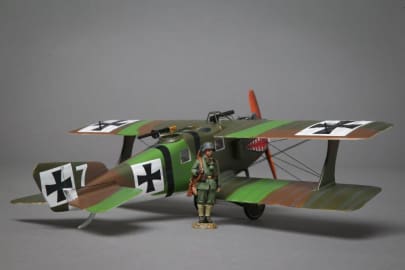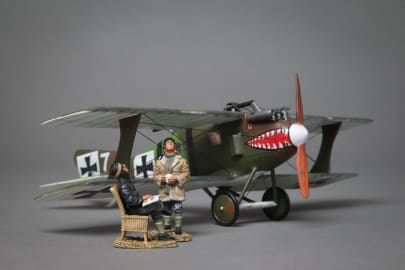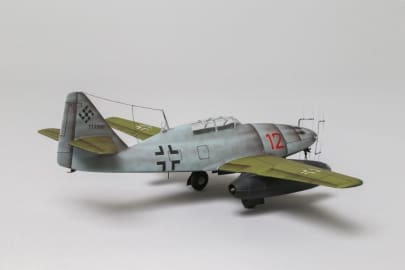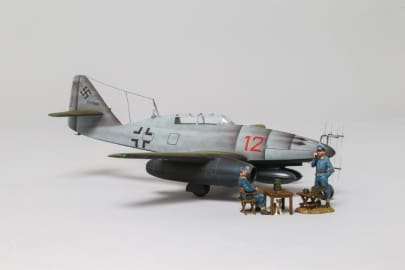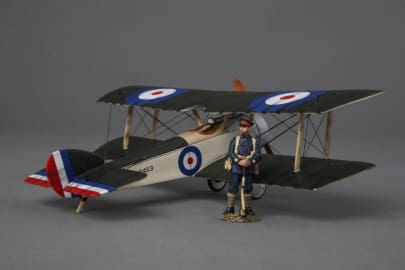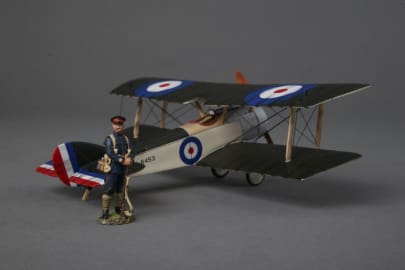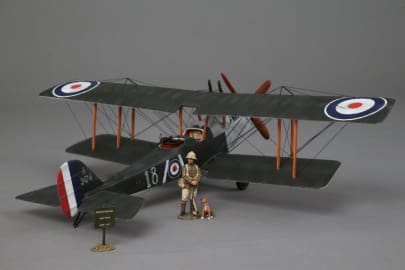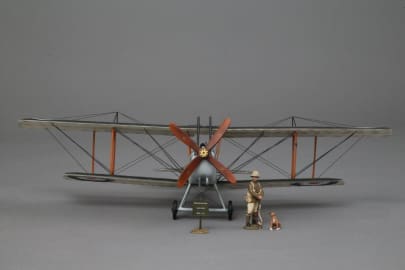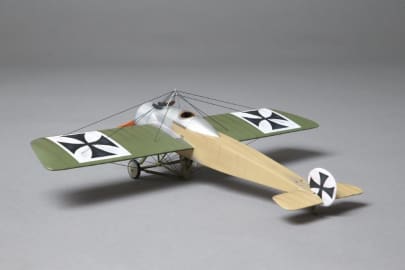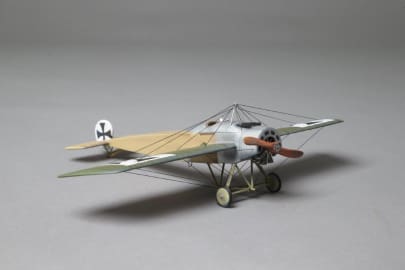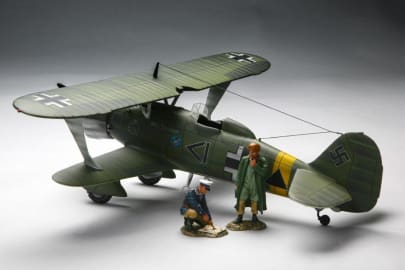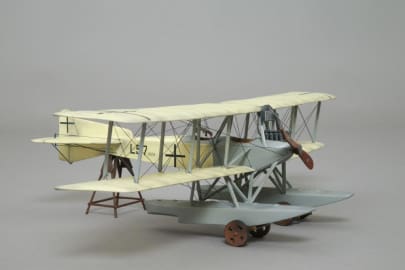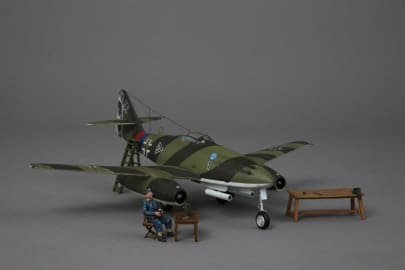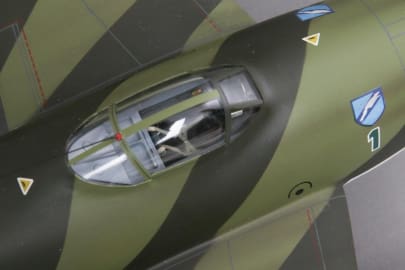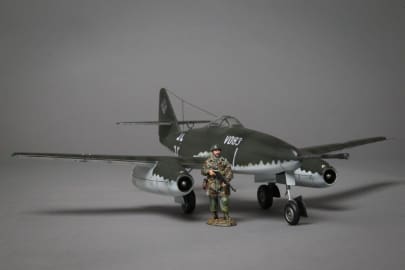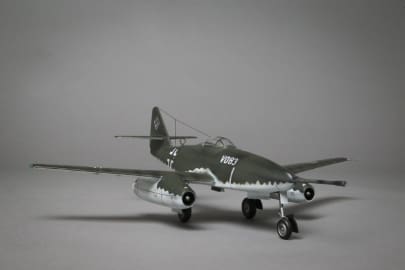- Free shipping available on orders over £100 (UK) £250 (EU) and $300 rest of the world
WOW286 Sopwith Dolphin
Out of Stock
Description
Description
The Sopwith Dolphin was a late war fighter aircraft employed by the RFC and later the RAF. It entered service in late 1917 and proved to be a formidable fighter which has often been overlooked by aviation enthusiasts and authors.
In early 1917, the Sopwith chief engineer, Herbert Smith, began designing a new fighter powered by the geared 200 hp Hispano-Suiza 8B engine. The resulting Dolphin was a two-bay, single-seat biplane, with the upper wings attached to an open steel frame above the cockpit. To maintain the correct centre of gravity, the lower wings were positioned 13 in (33 cm) forward of the upper wings, creating the Dolphin’s distinctive negative wing stagger.
The pilot sat with his head through the frame, where he had an excellent view. This configuration sometimes caused difficulty for novices, who found it difficult to keep the aircraft pointed at the horizon because the nose was not visible from the cockpit. The cockpit was nevertheless warm and comfortable, in part because water pipes ran alongside the cockpit walls to the two side-mounted radiator blocks.
The Dolphin proved successful and generally popular with pilots. The aircraft was fast, manoeuvrable, and easy to fly, though a sharp stall was noted. In his memoir Sagittarius Rising,Cecil Lewis described a mock dogfight between his S.E.5 and a Dolphin: “The Dolphin had a better performance than I realised. He was up in a climbing turn and on my tail in a flash. I half rolled out of the way, he was still there. I sat in a tight climbing spiral, he sat in a tighter one. I tried to climb above him, he climbed faster. Every dodge I have ever learned I tried on him; but he just sat there on my tail, for all the world as if I had just been towing him behind me.”
The highest-scoring Dolphin unit was No. 87 Squadron, which shot down 89 enemy aircraft. Pilots of No. 79 Squadron shot down 64 enemy aircraft in the eight and a half months that the aircraft was at the front. The top two Dolphin aces served in No. 79 Squadron. Captain Francis Gillett an American, scored 20 victories in the type and Lieutenant Ronald Bannerman, a New Zealander, scored 17 victories. The third-ranking Dolphin ace was Captain Arthur Vigers of 87 Squadron, who attained all 14 of his victories in the same aircraft.
This 1/30 scale Mahogany model is limited to 5 in number, it was flown by H Larkin an Ace with 11 victories who flew with 87 Squadron.
One final note, the Dolphin could be fitted with twin Lewis machine guns on the top cabane crossbar wing as well as twin Vickers machine guns firing forward, fitted above the engine cowling.
The overhead Lewis guns are fitted to this model, the initial factory sample provided did not have the Lewis guns but these have now been fitted as per the last photo.
The Terrain mat shown is from the Thomas Gunn Range, all the other excellent figures and accessories are from John Jenkins designs and are shown for display purposes only.

